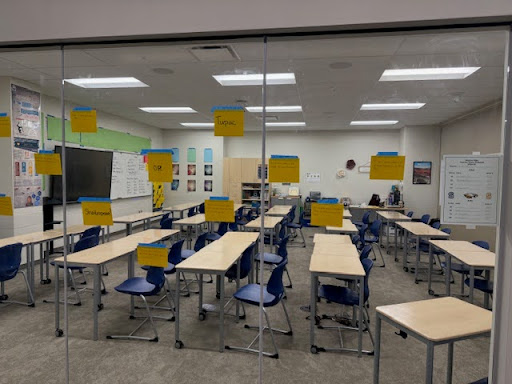In a world that is constantly growing, people and governments everywhere face a major choice. How should we power this planet without destroying it? For centuries, coal and gas have fueled our progress; however, today we live with the consequences. The real future could be nuclear, showing us ways to power Earth in cleaner and more reliable ways.
Power generation comes in different forms. Fossil fuel plants rely on combustion, burning coal or gas to produce heat that boils water and spins a turbine. Nuclear power, on the other hand, releases energy by splitting atoms, usually uranium. Nuclear power is much more efficient.
Jane Jones, the Skyline AP Environmental Science teacher, puts it in perspective: “Nuclear Power, a kilogram of [uranium] could supply a whole area [a small city] with their electricity for, like, a year.” On the other hand, it could take millions of tons of coal to power the same small city for the same amount of time.
Coal has far greater air quality impacts. When coal burns, it releases air pollutants such as sulfur dioxide, nitrogen oxides, and greenhouse gases.
“Coal fired plants emit large amounts of air pollution,” said Emily Schilling, who leads the Environment and Natural Resources group at the law firm of Holland & Hart. Coal fired power also generates large amounts of coal ash. The ash must be stored in large impoundments, which can also leak into the environment, potentially contaminating ground water around the breach.
Nuclear energy generation releases mostly steam and does not contribute to climate change. The environmental problem with nuclear energy is the storage of the waste: “All the waste is being stored on that site; we really have no way of knowing how long we’ll need to contain it,” said Jones. The difficulty of storing nuclear waste begins with the byproducts created when the reaction occurs.
“Whenever you split [uranium] apart, there are these byproducts that come off. They’re typically radioactive,” said Brooks Gunderson, one of the Chemistry teachers at Skyline. Radioactivity is mainly what scares people because of the dangers of exposure to radiation and how long radioactive elements take to break down.
Nuclear waste breaks down in terms of half lives. “A half-life is essentially how long it takes for half of a radioactive sample to decay,” Gunderson said, and due to the length of time it takes for some of these radioactive samples to decay, it scares people.
The management and storage of nuclear waste has always been one of the leading forces in the push against nuclear energy. “Managing spent nuclear fuel has been a major dilemma since the start of nuclear power, and until we agree on a safe way to handle it, the growth of nuclear energy will always be limited,” said Tom Grumbly, who was Under Secretary of the Department of Energy during the Clinton Administration.
As Jones said, we don’t have a place to safely store the waste due to factors such as radioactivity and previous meltdowns, which cause NIMBY (Not in my Backyard) reactions. This phenomenon causes people to reject the idea of nuclear waste storage sites being built anywhere close to their homes.
As the world continues to grow and energy demands continue to rise, it’s clear that relying solely on fossil fuels isn’t sustainable. Nuclear power is efficient; it releases little to no greenhouse gases and presents itself as a compelling alternative.
Advances in nuclear power generation, such as Small Modular Reactors (SMRs) as well as advancements in waste management, all establish nuclear power as one of, if not the best, way to produce power in the future. As Grumbly put it: “The real challenge with nuclear power isn’t the science; it’s the policy—how we regulate it, how we deal with the waste, and whether we have the will to make it part of the solution.”




